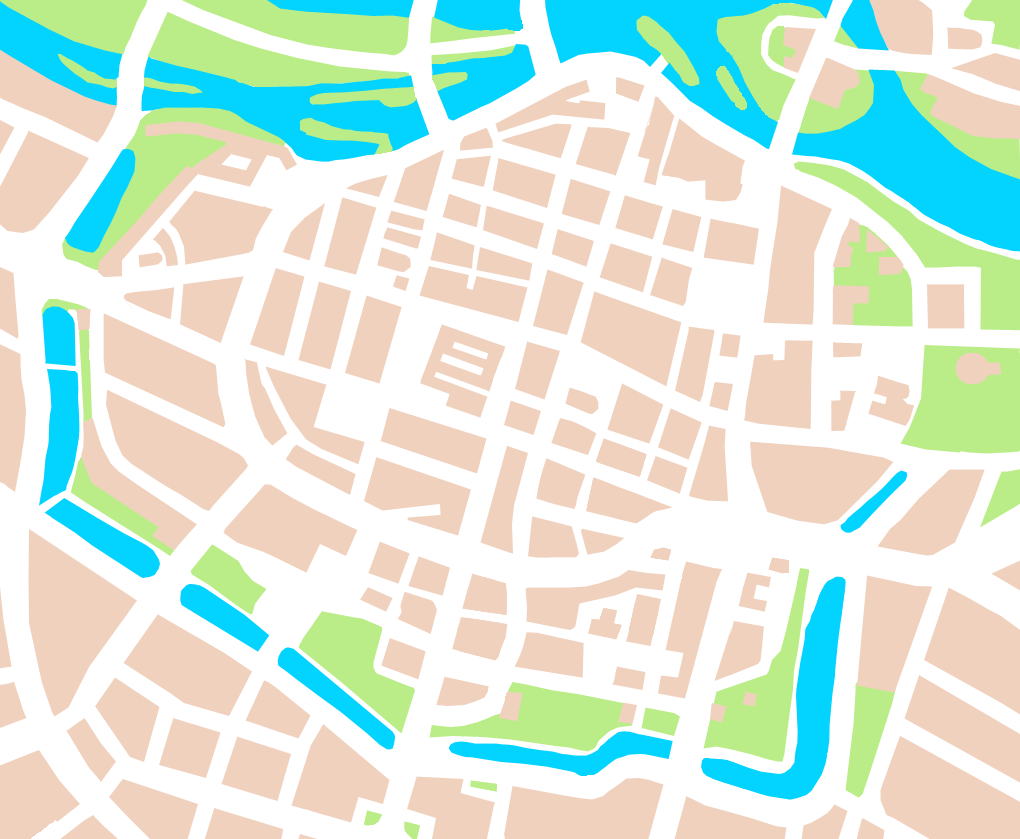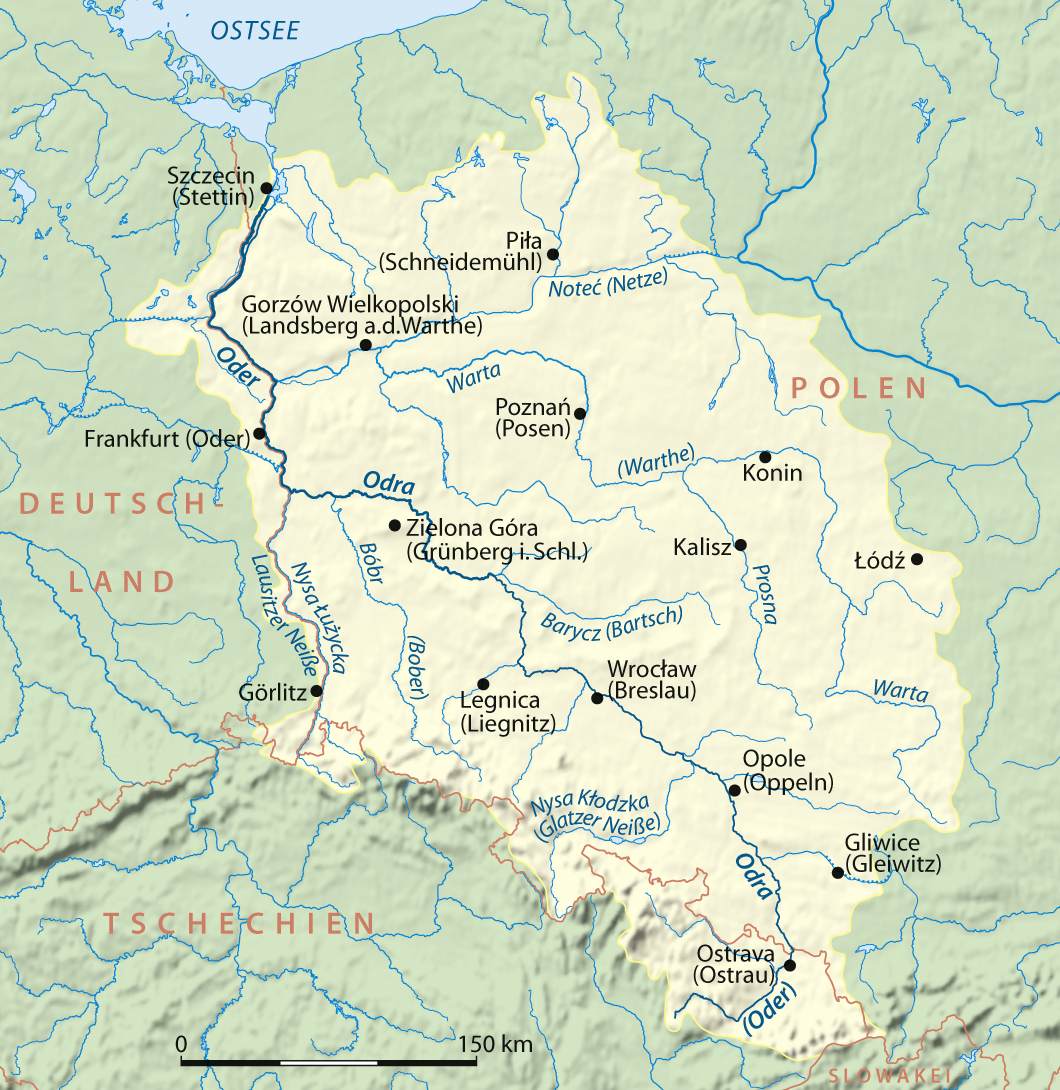|
Old Town, Wrocław
The Old Town in Wrocław () is the oldest part of the left-bank Wrocław, originating from the thirteenth century. It is surrounded by the City Moat, a remnant of the complex system of fortifications, largely based on natural and artificial sections of the Oder River and the Oława River flowing into it. The green belt along the moat (and further along the Oder) is called the Old Town Promenade. The center of the old city is the historic Market Square (''Rynek''), with numerous '' kamienice'', the Old and New Town Hall (''Ratusz''). There is a number of historic landmarks in its vicinity, such as the Salt Market, St. Elizabeth of Hungary Church, St. Mary Magdalene Church, and numerous monuments. In the northern part of the old town can be found the main campus of the Wrocław University with the University Square, and on the opposite, southern side, lies the famous Quarter of the Four Denominations. The Church of Saints Hedwig and Clara next to Nankiera Square is the mausoleum ... [...More Info...] [...Related Items...] OR: [Wikipedia] [Google] [Baidu] |
Wrocław
Wrocław is a city in southwestern Poland, and the capital of the Lower Silesian Voivodeship. It is the largest city and historical capital of the region of Silesia. It lies on the banks of the Oder River in the Silesian Lowlands of Central Europe, roughly from the Sudetes, Sudeten Mountains to the north. In 2023, the official population of Wrocław was 674,132, making it the third-largest city in Poland. The population of the Wrocław metropolitan area is around 1.25 million. Wrocław is the historical capital of Silesia and Lower Silesia. The history of the city dates back over 1,000 years; at various times, it has been part of the Kingdom of Poland, the Kingdom of Bohemia, the Kingdom of Hungary, the Habsburg monarchy of Austria, the Kingdom of Prussia and German Reich, Germany, until it became again part of Poland in 1945 immediately after World War II. Wrocław is a College town, university city with a student population of over 130,000, making it one of the most yo ... [...More Info...] [...Related Items...] OR: [Wikipedia] [Google] [Baidu] |
Silesian Piasts
The Silesian Piasts were the elder of four lines of the Polish Piast dynasty beginning with Władysław II the Exile (1105–1159), eldest son of Duke Bolesław III Wrymouth, Bolesław III of Poland. By Bolesław's Testament of Bolesław III Krzywousty, testament, Władysław was granted Duchy of Silesia, Silesia as his hereditary province and also the Lesser Polish Seniorate Province at Kraków according to the principle of agnatic seniority. Early history The history of the Silesian Piasts began with the feudal fragmentation of Poland in 1138 following the death of the List of Polish monarchs, Polish duke Bolesław III Wrymouth. While the Silesian province and the Kraków seniorate were assigned to Władysław II the Exile, his three younger half-brothers Bolesław IV the Curly, Mieszko III the Old, and Henry of Sandomierz received Duchy of Masovia, Masovia, Duchy of Greater Poland, Greater Poland and Duchy of Sandomierz, Sandomierz, respectively, according to the Testament of ... [...More Info...] [...Related Items...] OR: [Wikipedia] [Google] [Baidu] |
Oder River
The Oder ( ; Czech and ) is a river in Central Europe. It is Poland's second-longest river and third-longest within its borders after the Vistula and its largest tributary the Warta. The Oder rises in the Czech Republic and flows through western Poland, later forming of the border between Poland and Germany as part of the Oder–Neisse line. The river ultimately flows into the Szczecin Lagoon north of Szczecin and then into three branches (the Dziwna, Świna and Peene) that empty into the Bay of Pomerania of the Baltic Sea. Names The Oder is known by several names in different languages, but the modern ones are very similar: English and ; Czech, Polish, and , ; (); ; Medieval Latin: ''Od(d)era''; Renaissance Latin: ''Viadrus'' (invented in 1534). The origin of this name is said by onomastician Jürgen Udolph to come from the Illyrian word ''*Adra'' (“water vein”). Ptolemy knew the modern Oder as the Συήβος (''Suebos''; Latin ''Suevus''), a name apparentl ... [...More Info...] [...Related Items...] OR: [Wikipedia] [Google] [Baidu] |
Ostrów Tumski, Wrocław
Ostrów (Polish for "river island") may refer to: Places Poland ; Greater Poland Voivodeship * Ostrów Wielkopolski, a town in Greater Poland Voivodeship (west-central Poland) * Ostrów, Greater Poland Voivodeship in Greater Poland Voivodeship (west-central Poland) ; Kuyavian-Pomeranian Voivodeship * Ostrów, Brodnica County in Kuyavian-Pomeranian Voivodeship (north-central Poland) ; Lesser Poland Voivodeship * Ostrów, Proszowice County in Lesser Poland Voivodeship (south Poland) * Ostrów, Tarnów County in Lesser Poland Voivodeship (south Poland) ; Lublin Voivodship * Ostrów Lubelski, a town in Lublin Voivodship (east Poland) * Ostrów, Biała Podlaska County in Lublin Voivodeship (east Poland) * Ostrów, Gmina Dorohusk in Lublin Voivodeship (east Poland) * Ostrów, Gmina Wojsławice in Lublin Voivodeship (east Poland) * Ostrów, Kraśnik County in Lublin Voivodeship (east Poland) * Ostrów, Tomaszów Lubelski County in Lublin Voivodeship (east Poland) * Ostrów, ... [...More Info...] [...Related Items...] OR: [Wikipedia] [Google] [Baidu] |
Districts Of Wrocław
The districts of Wrocław () are the 48 Osiedle, local authority districts that make up the administrative area of Wrocław, Poland. Each is governed by a (). The present Wrocław districts were all created on March 21, 1991 by the Resolution XX/110/91 of the City Council of Wrocław' and are a type of local government district. On February 13, 2016, the Resolution XX/419/16 of the City Council of Wrocław' revised and established unambiguous and precise boundaries of Wrocław's districts, defining them in digital form. The current division system replaced the one from 1952, when Wrocław was divided into five main Dzielnica, boroughs (). Although they were abolished in 1991 and have not existed as public administration units since then, areas of borders and names similar/identical to the former districts still exist in the practice of operation of various types of authorities and administrations (e.g. as divisions of territorial competencies of courts, prosecutors' offices, tax ... [...More Info...] [...Related Items...] OR: [Wikipedia] [Google] [Baidu] |
Narodowy Instytut Dziedzictwa
The National Institute of Cultural Heritage of Poland () is a Polish governmental institution responsible for documenting cultural property and the intangible cultural heritage, as well as for supporting and coordinating their protection."National Institute of Cultural Heritage" English-language websiteNarodowy Instytut Dziedzictwa, "O NID" ("About NID") Heritage lists The Institute coordinates at the national level the Registry of Cultural Property lists, maintained at the regional level by the |
Pomnik Historii
Historic Monument (, ) is one of several categories of objects of cultural heritage in Poland, objects of cultural heritage (in the singular, ''zabytek'') in Poland. To be recognized as a Polish historic monument, an object must be declared such by the President of Poland. The term "historic monument" was introduced into Polish law in 1990, and the first Historic Monuments were declared by President Lech Wałęsa in 1994. List The National Heritage Board of Poland maintains the official list. References {{reflist Objects of cultural heritage in Poland Law of Poland ... [...More Info...] [...Related Items...] OR: [Wikipedia] [Google] [Baidu] |
Stare Miasto
Stare Miasto means "Old Town" in Polish. It may refer to the following places: City districts * Stare Miasto, Gdańsk * Stare Miasto, Kraków (for the specific neighbourhood, see Kraków Old Town) * Stare Miasto, Police * Stare Miasto, Poznań (for the specific neighbourhood, see Poznań Old Town) * Stare Miasto, Szczecin * Stare Miasto, Warsaw * Stare Miasto, Wrocław (for the specific neighbourhood, see Wrocław Old Town) * Stare Miasto, Polish name for Staré Město (Třinec) in the Czech Republic Villages * Stare Miasto, Konin County in Greater Poland Voivodeship (west-central Poland) * Stare Miasto, Subcarpathian Voivodeship (south-east Poland) * Stare Miasto, Szamotuły County in Greater Poland Voivodeship (west-central Poland) * Stare Miasto, Pomeranian Voivodeship (north Poland) * Stare Miasto, Warmian-Masurian Voivodeship (north Poland) See also * Old Town (other) In a city or town, the old town is its historic or original core. Although ... [...More Info...] [...Related Items...] OR: [Wikipedia] [Google] [Baidu] |
Anne Of Bohemia
Anne of Bohemia (11 May 1366 – 7 June 1394), also known as Anne of Luxembourg, was Queen consort of England, Queen of England as the first wife of King Richard II. A member of the House of Luxembourg, she was the daughter of Charles IV, Holy Roman Emperor and King of Bohemia, and Elizabeth of Pomerania. Her death at the age of 28 was believed to have been caused by Plague (disease), plague. Early life Anne had four brothers, including the Sigismund, Holy Roman Emperor, Holy Roman Emperor Sigismund, and one younger sister, Margaret of Bohemia, Burgravine of Nuremberg. She also had five half-siblings from her father's previous marriages, including Margaret of Bohemia, Queen of Hungary. She was brought up mainly at Prague Castle, and spent much of her early life in the care of her brother, King Wenceslaus IV of Bohemia. She could read German, Czech, and Latin. On her journey through Flanders on the way to her new life in England, she came under the protection of her uncle, Wence ... [...More Info...] [...Related Items...] OR: [Wikipedia] [Google] [Baidu] |
Henry VI The Good
Henry VI the Good (also known as of Wrocław or of Breslau) (; ) (18 March 1294 – 24 November 1335) was a Duke of Wrocław from 1296 (with his brothers as co-rulers until 1311). He was the second son of Henry V the Fat, Duke of Legnica and Wrocław, by his wife Elisabeth, daughter of Bolesław the Pious, Duke of Greater Poland. Life Henry's father died in 1296, when Henry was two years old. Because he and his brothers, Bolesław III and Władysław (who was born after their father's death), were minors the regency of their lands was taken over by their mother, the Dowager Duchess Elisabeth (d. 1304) and their paternal uncle Bolko I (d. 1301). Between 1301 and 1302 the official guardianship of Henry V's sons was carried out by Henry of Wierzbna, Bishop of Wrocław. Finally the authority over the Duchy of Wrocław-Legnica was personally assumed by the King Wenceslaus II of Bohemia and Poland, which brought Bolesław III into his court in Prague. Is unknown what happened ... [...More Info...] [...Related Items...] OR: [Wikipedia] [Google] [Baidu] |







